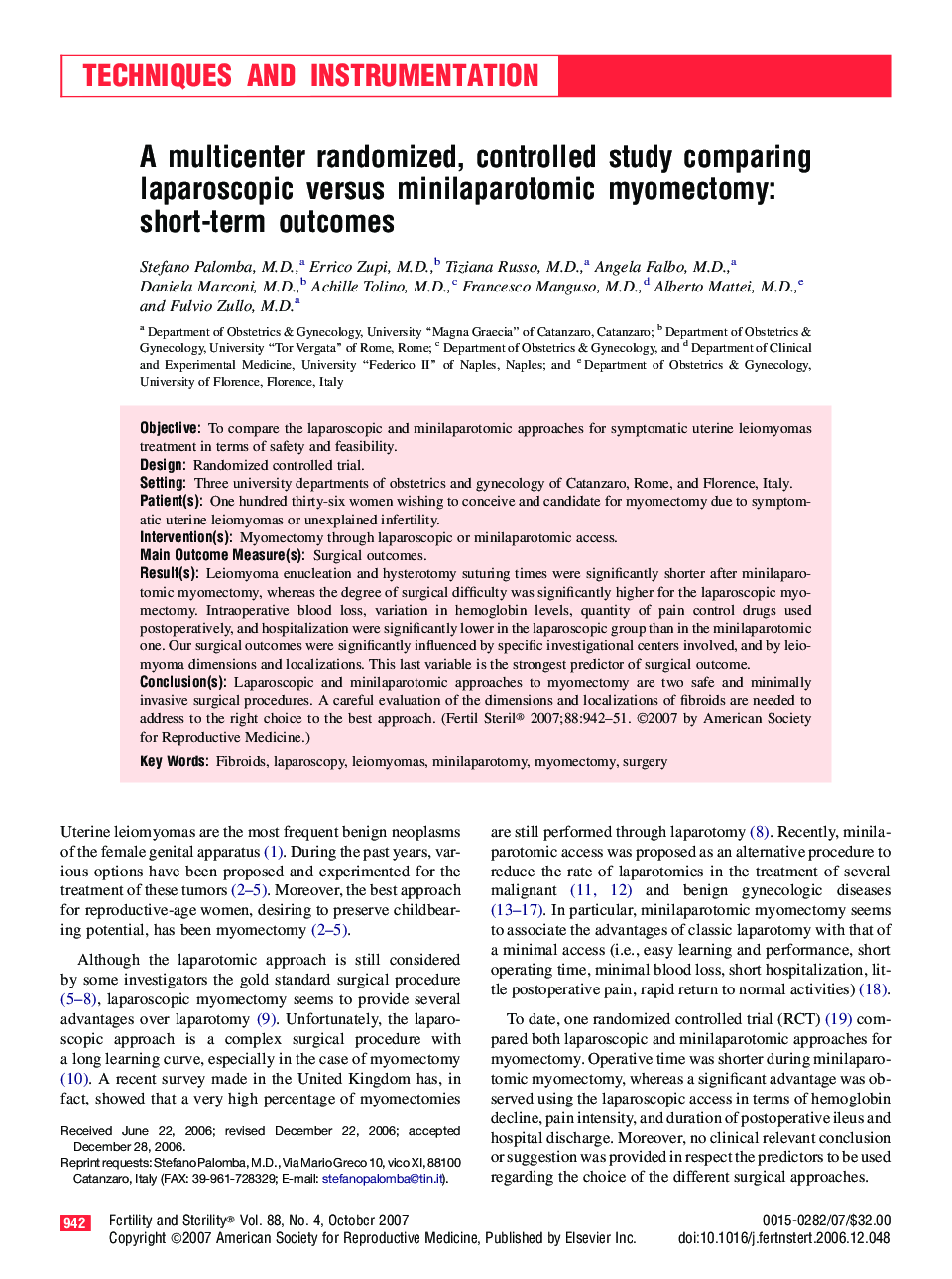| Article ID | Journal | Published Year | Pages | File Type |
|---|---|---|---|---|
| 3935425 | Fertility and Sterility | 2007 | 10 Pages |
ObjectiveTo compare the laparoscopic and minilaparotomic approaches for symptomatic uterine leiomyomas treatment in terms of safety and feasibility.DesignRandomized controlled trial.SettingThree university departments of obstetrics and gynecology of Catanzaro, Rome, and Florence, Italy.Patient(s)One hundred thirty-six women wishing to conceive and candidate for myomectomy due to symptomatic uterine leiomyomas or unexplained infertility.Intervention(s)Myomectomy through laparoscopic or minilaparotomic access.Main Outcome Measure(s)Surgical outcomes.Result(s)Leiomyoma enucleation and hysterotomy suturing times were significantly shorter after minilaparotomic myomectomy, whereas the degree of surgical difficulty was significantly higher for the laparoscopic myomectomy. Intraoperative blood loss, variation in hemoglobin levels, quantity of pain control drugs used postoperatively, and hospitalization were significantly lower in the laparoscopic group than in the minilaparotomic one. Our surgical outcomes were significantly influenced by specific investigational centers involved, and by leiomyoma dimensions and localizations. This last variable is the strongest predictor of surgical outcome.Conclusion(s)Laparoscopic and minilaparotomic approaches to myomectomy are two safe and minimally invasive surgical procedures. A careful evaluation of the dimensions and localizations of fibroids are needed to address to the right choice to the best approach.
